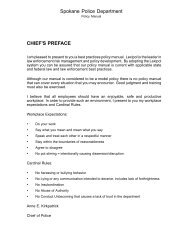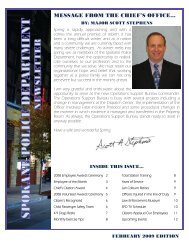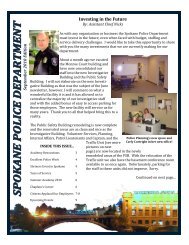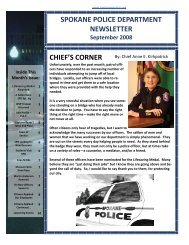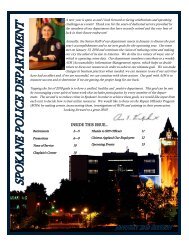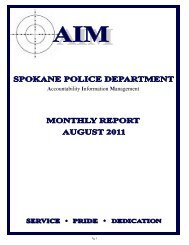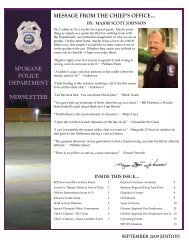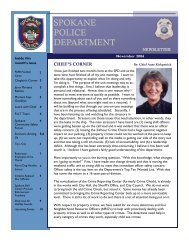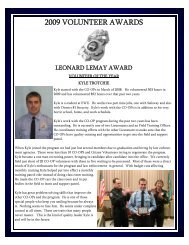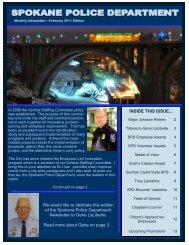DRAFT REPORT OF THE CITY OF SPOKANE USE ... - Samuel Walker
DRAFT REPORT OF THE CITY OF SPOKANE USE ... - Samuel Walker
DRAFT REPORT OF THE CITY OF SPOKANE USE ... - Samuel Walker
Create successful ePaper yourself
Turn your PDF publications into a flip-book with our unique Google optimized e-Paper software.
Mr. Earl F. Martin<br />
RE: <strong>REPORT</strong> TO <strong>USE</strong> <strong>OF</strong> FORCE COMMISSION<br />
December 3, 2012<br />
Page 16<br />
It appears that some officers are not carrying ECDs because of a lack of functional equipment<br />
or because they have lost confidence in the reliability of the device they were issued. One option is<br />
to have supervisors confirm at shift briefings that patrol officers are properly equipped and that<br />
officers are reminded to bring to the attention of the shift supervisor or other designated personnel<br />
the fact that equipment is either not functioning properly or is otherwise unavailable. This is critical<br />
in regard to force options because when a non-deadly force option fails because of an availability or<br />
functionality issue the implication is negligence in maintaining non-deadly force options and<br />
negligent supervision with regard to the same.<br />
With regard to ECD use of force concerns, SPD personnel throughout the ranks should<br />
receive force options training on multiple deployments and long-term duration deployments. In<br />
particular, in a practical scenario type of setting or a hands-on type of training experience the concept<br />
of cuffing under power and handcuffing intervention tactics should be reaffirmed with personnel as<br />
preferred to long-term duration deployment. Likewise, 3-point stunning should be taught and<br />
emphasized as a way to avoid the need for multiple trigger pulls or long-term duration deployments.<br />
Clearly this is another area where the force simulator would be of great assistance. Recent use of<br />
force case law decisions have been focused on ECDs including both drive-stunning and probe<br />
deployments across jurisdictions. This developing area of the law requires that agencies provide<br />
periodic legal updates and hands-on training dealing with the use of both non-deadly and deadly<br />
force options.<br />
Updating officers on the classification of probe deployments at the level of non-deadly<br />
intermediate force and the need for active resistance and a threat to officers or others prior to using<br />
same is imperative. In the case of drive-stuns, this non-deadly force option generally requires a<br />
warning and an opportunity for volitional compliance between pain compliance applications.<br />
Officers should be trained with regard to the "window of opportunity" and the concept of "cuffing<br />
under power" or alternatively, formulation of a plan of action to reduce the number of ECD<br />
discharges and gain control over a subject in an efficient manner. Likewise, supervisors need to be<br />
trained to intervene when long-term durations or multiple deployments are occurring. Also,<br />
supervisors or other typically available personnel need to be trained to download ECDs when ECD<br />
devices are used to enable officers to use the data port download printouts to prepare accurate reports<br />
of ECD deployments and to require the printouts to be attached to incident and use of force reports.<br />
IN-SERVICE CHEMICAL AGENTS AND IMPACT PROJECTILE TRAINING<br />
During my meetings in Spokane I was not able to meet with the Chemical Agents Response<br />
Team (CART) instructor Corporal Kevin Keller. Thus, my meeting with Corporal Keller was<br />
conducted via telephone. Cpl. Keller was very helpful and forthcoming with regard to the training<br />
and force options available to SPD patrol and specialized team members in the form of chemical



